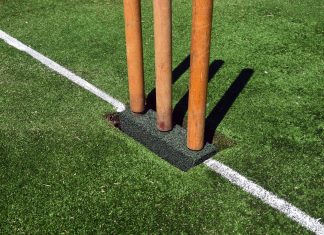STAFF WRITERS
THE federal and state governments are investing in road safety upgrades at four locations in Gippsland to make conditions safer for road users.
The Gippsland projects include:
- Hazelwood Road and Jeeralang North Road, Traralgon – Intersection;
- Great Alpine Road between Bruthen and Ensay – Mid-block road safety treatment (additional/widening of lanes and shoulders);
- Great Alpine Road between Ensay and Cobungra – Mid-block road safety treatment (additional/widening of lanes and shoulders);
- Wy Yung Road (Bullumwaal Rd) and Howitt Avenue, Wy Yung – Intersection safety improvements.
The projects are jointly funded through the $120 million Victorian Road Safety Program, with funding split evenly between the state and federal governments.
It forms part of a wider initiative from the federal government to target road safety, with big funding increases across a range of programs.
It comes after the Nationals Member for Gippsland East, Tim Bull, criticised the state government, whose own assessment found 91 per cent of Victoria’s roads were in ‘poor or very poor’ condition.
“Figures released by Roads Minister, Melissa Horne, show resurfacing spending dropped from $201.4 million in 2022/23 to $37.6 million in 2023/24,” Mr Bull said.
“This 81 per cent cut in funding to resurface roads on top of their already poor condition, can only ever end one way – even worse conditions.
“In addition, road maintenance funding (the money used to fill potholes and make temporary repairs) is less than it was in 2020 after a 45 per cent cut in that year.”
Mr Bull said Australian Community Media, which completed some additional research, revealed repairs dropped from more than nine million square metres in 2022/23 to just 343,000 square metres in 2023/24 – a 96 per cent decrease.
“Some of this can be attributed to the northern Victorian flood response, but with a raft of signs on our roads warning us to slow down due to a ‘rough surface ahead’ or ‘road hazard ahead’, the funding needed to be sustained rather than obliterated,” he said.
“Interestingly, in the state’s own survey, not one road was listed as ‘good’ or ‘very good’, with the remaining nine per cent only listed as ‘fair’.”
The National Transport Research Organisation (NTRO) conducted the survey for the Department of Transport across the state’s road network.
Mr Bull said the survey was undertaken using the NTRO’s iPAVE technology and was spruiked by the state government in January last year as ‘world-first’, despite having been used by other states for years.
“The state has argued that unprecedented wet weather is a contributor, but this is not accurate and a poor excuse,” Mr Bull asserted.
“The survey listed only 707 km as flood affected and, apart from the northern Victorian floods, Bureau data shows the weather has been largely average over recent years.
“The real reason is simply this. Labor can’t manage money, can’t manage projects and it’s Victorian motorists who are paying the price.”
Federal Labor says it has substantially increased Black Spot Program funding, which is progressively increasing since July 1 from $110 to $150 million per year.
Additionally, the Roads to Recovery funding has already risen to $650 million this year, up from $500 million last year, and will continue to rise to $1 billion by 2027-28 per year onwards.
Ms Horne said the state government was committed to improving the drivability of roads.
“We are getting on and delivering widespread improvements across our regional road network to reduce fatal and serious road incidents in Victoria,” she said.
Federal Labor Senator for Victoria, Raff Ciccone, said all levels of government would be working toward improving road safety.
“Federal Labor, in partnership with the Victorian government, is investing in key infrastructure that will improve road safety across Gippsland,” he said.
“These four Gippsland projects will provide better visibility and create safer environments for all road users, reducing the risk of crashes.”











